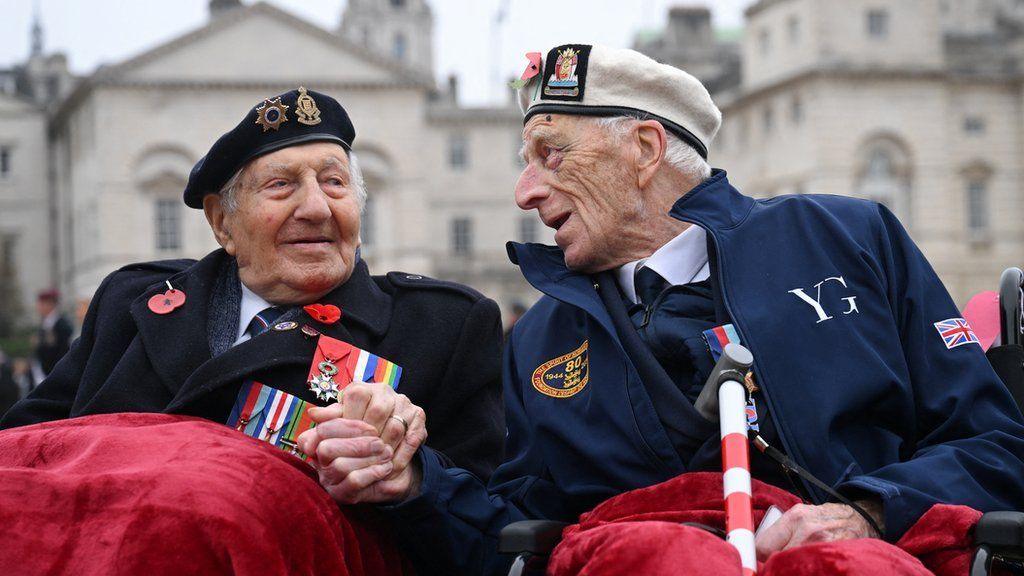Six D-Day veterans pay tribute on poignant Remembrance Day
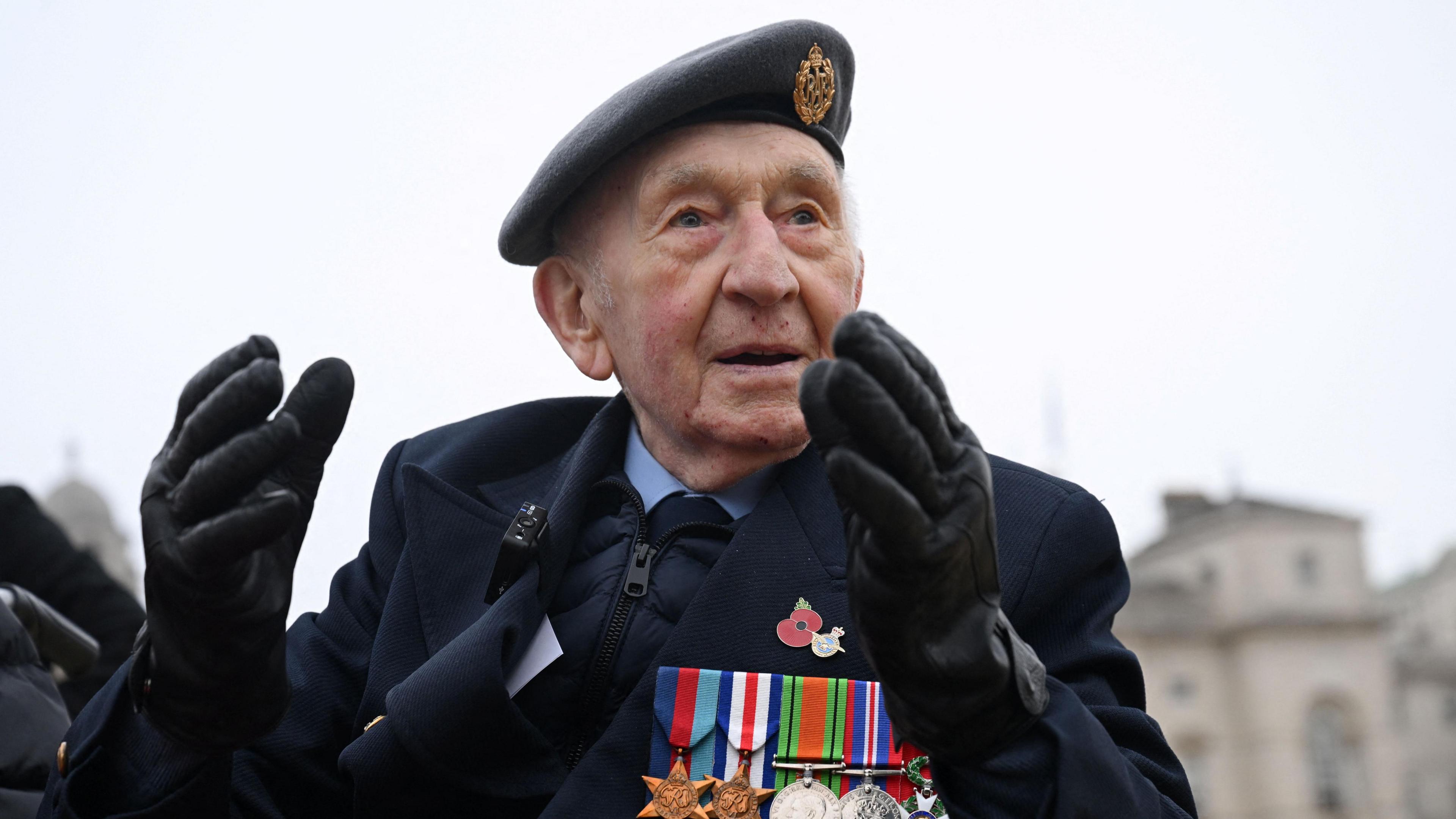
World War Two veteran Joe Randall, 101, attended the ceremony
- Published
Among the ten thousand men and women marching past the Cenotaph at this year’s Remembrance service, there were six surviving veterans of D-Day.
They are now so few that they were outnumbered by the eight former prime minsters, lined up at the annual commemoration in London’s Whitehall.
This summer saw a major international event marking the 80th anniversary of the Normandy landings, with a small army of world leaders and accompanying media.
Here under low, grey autumn skies the six remaining representatives of that huge and heroic moment, the men who were actually there, went quietly past in wheelchairs, with a collective age of 595 years.
It included 101-year-old Joe Randall, who was aged 20 at D-Day, and who had helped build temporary airfields for the invasion force liberating Europe from Nazism.
There’s an immense poignancy to such moments, literally watching history moving out of sight.
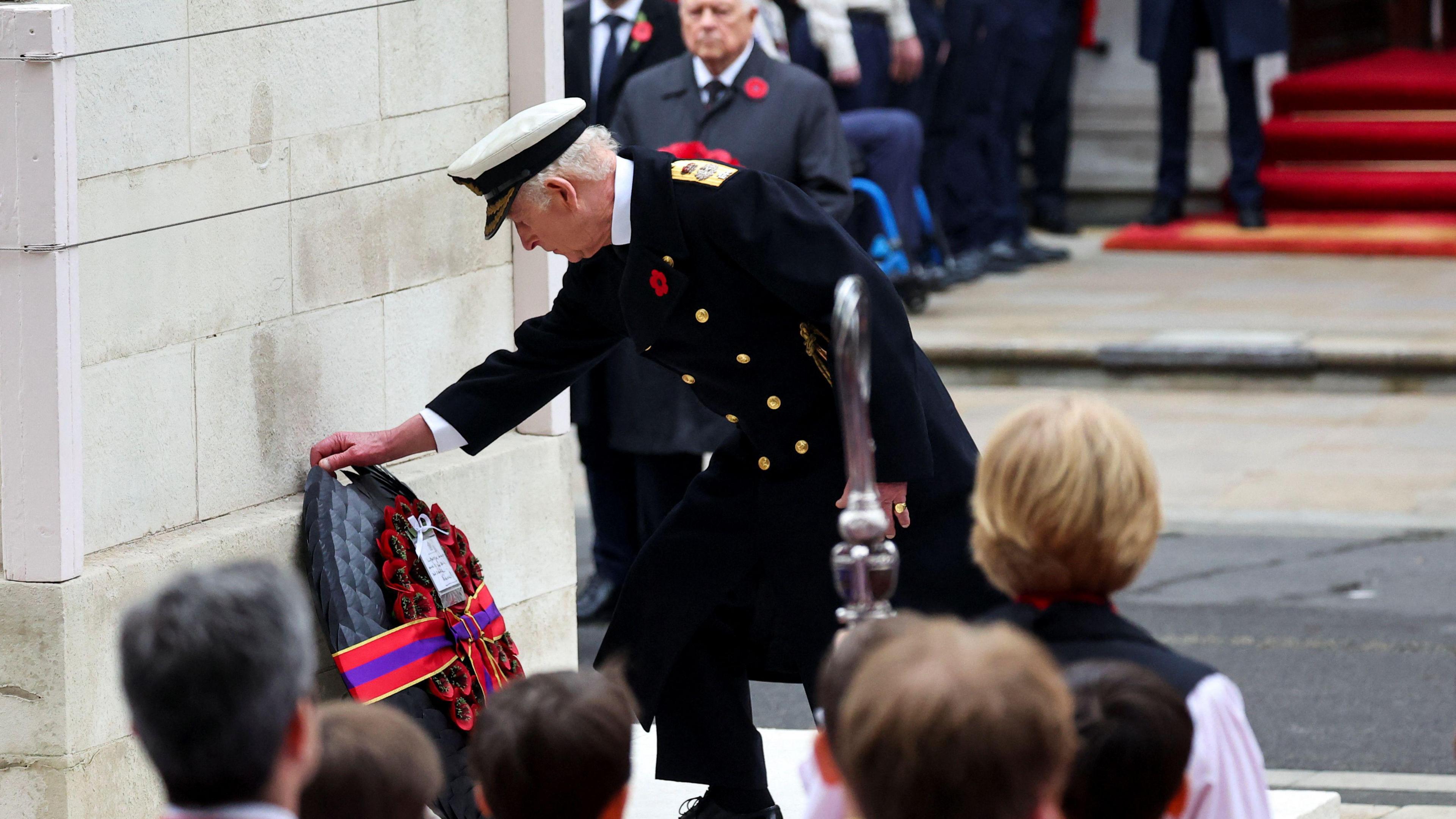
With a military band playing marches, the Spirit of Normandy group were brought past the Cenotaph, part of a long stream of veterans paying their homage, each bringing their own memories as they laid their wreaths.
Like a marathon runner determined to cross the line, the very last veteran in the march-past had got out of a wheelchair and was helped on to a walking frame, so he could walk upright past the Cenotaph.
It was a slow, stubborn defiance of the passing years, paying his respects his own way, when all the other groups had finished, cheered on by the crowds nearby on the pavement.
The youngest contingent was also an emotional moment, in a different way from the ranks of grey-haired ex-military marchers.
There were children and young people, from nine years old and upwards, who had lost a parent in the armed forces, brought together by the Scotty’s Little Soldiers charity. All those years of missing a loved one still to come.
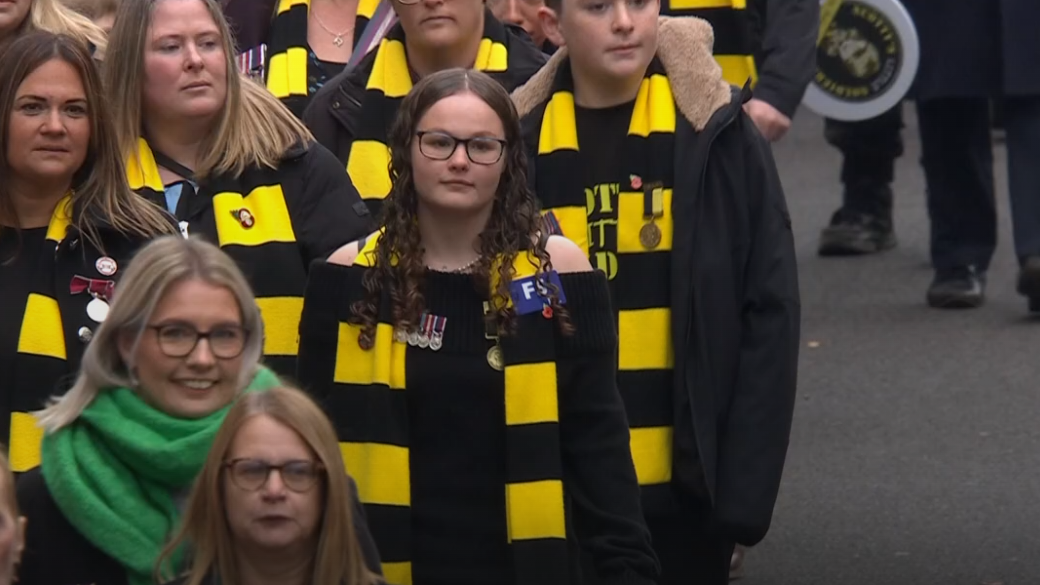
Bereaved children of armed forces personnel also took part in the march past
There’s an irresistible sense of the importance of time at such events.
Big Ben tolling out across Whitehall. The eleventh hour, the two-minute silence. The band keeping time, the marchers keeping step. The autumn leaves on a Whitehall empty of traffic.
For a few moments people even did the unthinkable - putting down their mobile phones.
Leading events was King Charles and what was he thinking about his own past year?
He has carried on working despite suffering from cancer. On his 76th birthday this week he will be out supporting food banks. As he stared solemnly straight ahead at the Cenotaph, was this his own commitment to public service, duty and endurance?
Catherine, the Princess of Wales, was looking down from the Foreign Office balcony, recovering from her own year of health problems. Much has changed since she stood there last year.
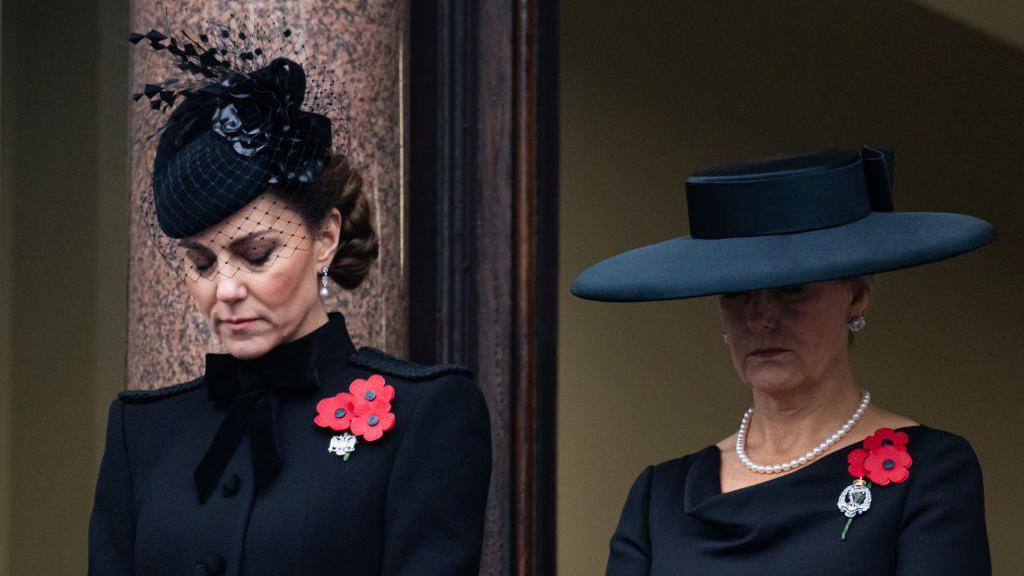
The Princess of Wales watched on from the balcony of the Foreign Office
It's been a different kind of upheaval this year for the politicians present. Sir Keir Starmer and Kemi Badenoch were laying wreaths for the first time as prime minister and leader of the opposition.
It was a day to remember previous wars, but the new ministers must have been thinking too of the conflicts raging today and wondering about where they could lead.
Behind where Sir Keir was standing, a Ukrainian flag was hanging limply over the Foreign Office building, without any wind to make it fly.
For all of those present, the royals, the veterans, the political leaders, the crowds, the focal point for Remembrance is the Cenotaph, the memorial standing in the middle of Whitehall.

It becomes a kind of altar as well as a monument, as Whitehall temporarily becomes a mixture of a church, military parade ground and national shrine.
Part of the Cenotaph's power is its plainness. There's almost no ornamentation or religious imagery. That might help it fit in with a modern, eclectic, multi-faith world, with representatives of more than 20 different religions and beliefs gathered around it.
The Cenotaph as we see it now is a permanent structure made from Portland stone, but it began as a temporary, wooden structure. There were people who thought it shouldn't be on Whitehall, as it might get in the way.
And perhaps that's its point. It's there to get in the way, a sometimes awkward reminder, to make people remember if they were ever tempted to forget.
- Published10 November 2024
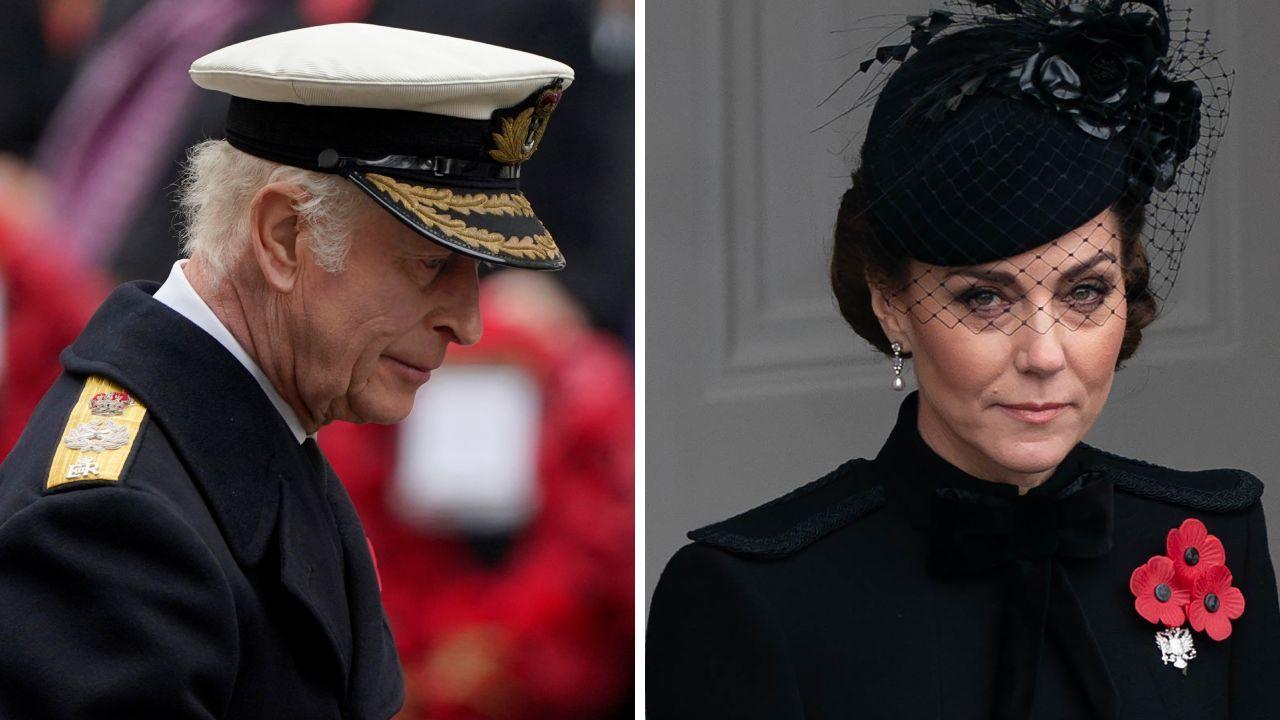
- Published10 November 2024
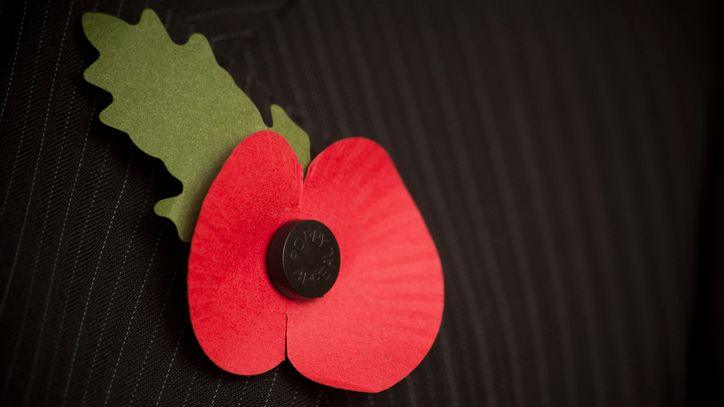
- Published10 November 2024
